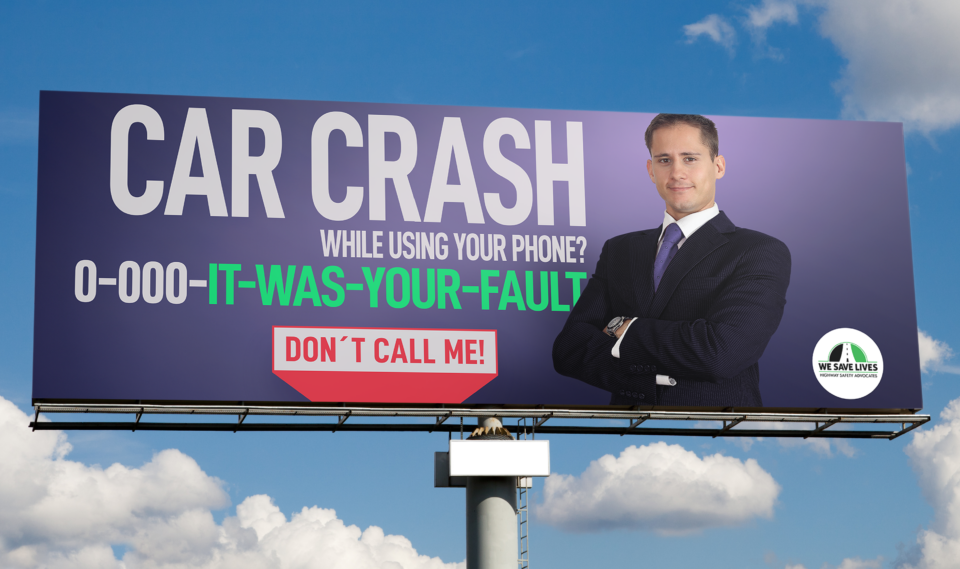- WE SAVE LIVES
- info@wesavelives.org
DID THE MEDIA PROMOTE STONED DRIVING?
WE SAVE LIVES AND Y&R / BRAVO MIAMI CAMPAIGN AGAINST DRUNK, DRUGGED AND DISTRACTED DRIVING
November 2, 2015HOW TO LOSE A VOLUNTEER IN 5 WAYS
November 2, 2015DID THE MEDIA PROMOTE STONED DRIVING?
“New study shows no link between marijuana use and car accidents” taunts USA Today, reporting on the February 6 press release from the National Highway Traffic Safety Administration (NHTSA). The Washington Post compares marijuana to alcohol, “Stoned drivers are a lot safer than drunk ones, new federal data show.” And from the first state to legalize marijuana for medical use, the Los Angeles Times proclaimed, “Good news (?): marijuana doesn’t increase the likelihood of car crashes.”
Unfortunately, irresponsible media headlines like those above ignore the authors’ warnings in NHTSA’s “Drug and Alcohol Crash Risk”1. Such inferences encourage the public to believe erroneously that marijuana does not impair driving, making it more difficult to deal with a growing problem: Driving Under the Influence of Drugs (DUID). These media icons failed to realize that not finding conclusive evidence that something is dangerous is very different than finding conclusive evidence that it is safe.
Isn’t it ironic that in 2014, when numerous research studies demonstrated that pot use could double the risk of a car crash 2, the only headlines touting this new discovery were in health related media and professional journals; not mainstream news sources?
Headlines do make a difference, when you consider that “Americans read headlines. And not much else,” according to the Washington Post. They go on to quote from a study by the American Press Institute, “So, roughly six in 10 people acknowledge that they have done nothing more than read news headlines in the past week.”
NHTSA also on February 6 released its survey of alcohol and drug use by drivers. They noted that drunk driving is declining, while drugged driving is increasing3.
The Institute for Behavior and Health estimates that drugged driving causes 20% of crashes and marijuana is the most common of the drugs cited. That translates into 8,600 deaths, 580,000 injuries, and $33 billion in property damage each year in the United States4. DUID is also one of the most difficult challenges facing highway safety advocates for a number of reasons:
• Incomplete data collection and analysis
• Inconsistent testing standards, procedures and practices
• An erroneous belief that what works for DUI alcohol can work for DUID
• Limited DUID training for officers and prosecutors
• Education that lags far behind DUI alcohol
• No central data base of DUID information
Most studies find a significant increase in vehicle crashes due to DUI-marijuana. Marijuana affects areas of the brain that control both physical and mental capacities. Evidence from both on-the-road and simulated driving studies indicate marijuana can negatively influence a driver’s attentiveness, perception of time and speed, and the ability to draw on information obtained through past experiences5.
So why are we so anxious to give permission to marijuana users to smoke and drive high? It isn’t that they really need permission; they have been doing it for years. But why would we want to give them our blessing?
Do we really want to see more stories like that of Tanya Gueverra, 25 and her 5 week old son, Adrian, who were killed when a driver under the influence of marijuana hit them head on? Tanya was killed instantly but little Adrian, suffered several days before dying. After admitting to vehicular homicide due to DUI marijuana, the driver was sentenced to 10 years in prison6.
It’s useful to understand why the recent NHTSA study yielded the results published. The study combined innocent victims with drivers culpable for causing a crash. This dramatically lowers the calculated risk of marijuana causing a crash.
Additionally, impairment is most pronounced in the first few hours after smoking pot and drug levels dissipate quickly in blood and oral fluids7. We have no evidence that the study used laboratory tests that can distinguish between recent and historical use, or if the test samples were taken before drug levels dissipated. This renders the study conclusions questionable.
One reason Virginia Beach was selected as a test site was that there was a highly supportive local police department that has energetically worked to reduce drunk and drugged driving. Virginia Beach is a military town, leading some to suspect that due to concerns about random testing, the driver pool could have a lower prevalence of drug impairment than other locales. These facts suggest Virginia Beach may not be representative of other locales.
The authors warned, “While the findings of this case control study were equivocal with regard to the crash risk associated with drug use by drivers, these results do not indicate that drug use by drivers is risk-free.” This warning was ignored by many in the media. We are also forgetting some common sense. If you smoke to get high and most who smoke do, then getting high means changing your mind set and that means less control over your actions. Why would anyone want to drive a two-ton weapon when they have less control over your actions?
It’s hard enough for victims of DUID to find justice, even before irresponsible NHTSA-inspired headlines. Consider the case of Justin McGrory, a California Highway Patrol Officer who, while making a traffic stop in 2010, was killed by Rafael Garcia, returning to Las Vegas after buying and consuming marijuana in California. The jury was unable to agree upon a manslaughter charge due to DUID, so the judge declared a mistrial. Jury members said they didn’t believe marijuana could impair driving. Therefore, a subsequent plea bargain arrangement put Garcia back on the road after a short sentence.
These tragedies will be repeated as the public is led to believe that driving high is risk-free.
Let’s remember that the media reports are based upon the NHTSA summary. The definitive report has yet to be published. We can only hope that the definitive report, when issued, will provide more effective cautions against misinterpreting the data and that the media will act more responsibly.
Candace Lightner Founder, We Save Lives www.wesavelives.org
Ed Wood, President, DUID Victim Voices www.duidvictimvoices.org
John Carnevale, PhD CEO Carnevale Associates, LLC www.carnevaleassociates.com
- “Drug and Alcohol Crash Risk,” Traffic Safety Facts Research Note DOT HS 812 117, National Highway Traffic Safety Administration
- Asbridge et al, Acute cannabis consumption and motor vehicle collision risk, BMJ 2012;344:e536 doi: 10.1136/bmj.e536 (Published 9 February 2012)
- “Results of the 2013-2014 National Roadside Survey of Alcohol and Drug Use by Drivers,” Traffic Safety Facts Research Note DOT HS 812 118, National Highway Traffic Safety Administration
- Institute for Behavior and Health, Public Policy Statement, www.druggeddriving.org
- “The Real Facts on Marijuana and Driving,” J. Michael Walsh, Oct 12,2010
- Weld County Colorado case 2010CR1842
- “Testing for Impairment by Cannabis, ” Grotenhermen, Franjo and Leson, Gero, DMay 2004



